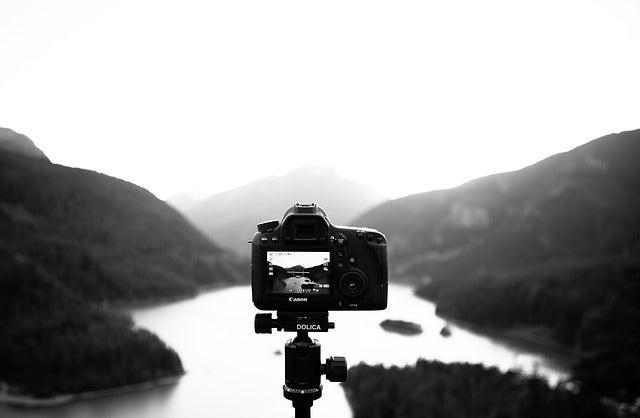If you’ve done any background research on photography – whether on the Camera House blog or elsewhere – you must have come across the term “ISO”.
ISO is one of the most important pillars of photography, alongside Shutter Speed and Aperture. Master ISO and you’re one step closer to mastering your camera’s manual settings.
Yet there’s still a lot of confusion around what ISO is, how it works, and how you should use it.

What Is ISO?
So what the heck is ISO? Well, it literally stands for the International Organization for Standardization, which is the main body that decides on standard sensitivity ratings.
In photography, ISO gauges how sensitive your camera is to light. Back in the analogue camera days, it measured the light sensitivity of the film you used; today, it measures the sensitivity of your image sensor.
How to Use ISO
ISO is important in photography because it can make all the difference between getting a correct exposure, with the right level of sharpness to illustrate your image, or blowing it completely.
It works like this: On all or most DSLRs, mirrorless cameras, and some compact cameras, there will be an adjustable ISO setting. This can range from anywhere between 100 to 12,800 – or even more depending on the quality of your camera.
ISO numbers, or “stops”, go up in value by a power of two, doubling your sensor’s sensitivity. So the stop sequence looks like this: 100, 200, 400, 800, 1600, 3200, 6400, etc.
The lower the ISO, the less sensitive your camera is to light. The more you increase the sensitivity, the more light your camera can capture without flash – but you’ll also be introducing graininess, or “noise” to your photos.
Noise and grain become more significant factors in your photography as they determine the innate sharpness and colour integrity of your picture.
The higher the ISO, the more chance you have of a loss of definition at the edges of objects. This can upset some people, but it can also add an atmospheric touch to an image as well.
Cameras with larger sensors and larger pixels, particularly DSLRs or mirrorless cameras, do a good job of combatting noise.
Finally, keep in mind that if you increase your sensor by four stops, say, you’ll need to decrease the shutter speed by the corresponding amount – four stops. That way, you’ll maintain the same total exposure value.
Thankfully, you’ll find Auto ISO in many cameras these days. Enabling this function means your camera will automatically increase the ISO if the shutter speed gets too low to produce a good quality image.
When to Use ISO
Every camera has a base ISO, which is the lowest setting your sensor can take. These days, the base ISO is normally 100, although you can get even lower.
Because raising your ISO decreases the quality of the image, it’s always best to stick to a lower ISO if possible. For example, on a bright day, on the beach or in the snow, it’s best you keep to a low ISO such as 100 or 200.
Low Light Situations
If you’re photographing in a low light situation, you might want to adjust your ISO to a higher setting (800 or 1600). This could be, for example:
- after dark
- on a very stormy day
- inside in a windowless building
- in an art gallery or church, which may have “no flash” rules
- at a birthday party.
Moving Objects
While adjusting ISO to deal with light conditions is a universal use of this feature in photography, you can also use it to take action photos in low light settings, without blur.
Put simply, if you wish to photograph a moving object at a high speed, your camera shutter, which regulates the amount of light allowed to hit the sensor over a time period, needs to be set at a very fast speed.
This restricts the amount of light reaching your sensor. Therefore, having an ISO that is more sensitive to light will give you more flexibility to shoot with a less flexible shutter speed!
Action scenarios that might call for a higher ISO include:
- Indoors sporting events
- Concerts
There’s a lot to learn in photography, but this is one of the simplest things to remember – higher ISO stops equal high sensitivity to light while low ISO stop equals less sensitivity to light.
And that is all you need to remember! If you’re in the market for a more capable camera with broader ISO capabilities, check out our range of DSLRs today! Alternatively, check out these 7 compact cameras that take great low light photos.
